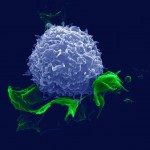Link to Pubmed [PMID] – 19375038
Gastroenterol. Clin. Biol. 2009 Mar;33 Suppl 2:S110-2
Steatosis is observed in around 25 to 70% of HIV-infected subjects. Steatosis is multifactorial. Steatosis was mainly related to denutrition and opportunistic infections at the Aids era then to nucleosidic analogues and mitochondrial cytopathies. Today, it is mainly associated with HAART- related lipodystrophy, and other classical causes (hyperlipidemia, diabetes, HCV infection) leading to insulin resistance. In the ANRS HC 02 RIBAVIC trial, in 395 co-infected HIV-HCV patients, steatosis was observed in 241 patients (61%). Among them, 38% had a grade I steatosis (less than 30% of fatty hepatocytes), 16% had a grade II steatosis (30 to 70% of hepatocytes) et 7% a grade III (more than 70% of hepatocytes). In multivariate analysis, factors independently associated with steatosis were genotype 3, Metavir fibrosis score, body mass index, HCV viral load and ferritinemia. Lipodystrophy and antiretroviral treatment were rarely associated with steatosis in the ANRS HC 02 RIBAVIC and APRICOT trials. In these trials, steatosis worsened the fibrosis progression but did not impact on the rate of sustained virological response. Finally, steatosis significantly decreases in patients with sustained virological response.

